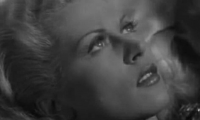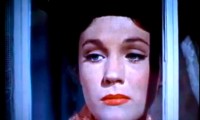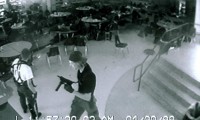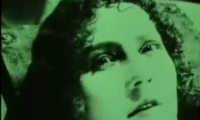If it weren’t for their characteristic shadow-infatuated cinematography, you might not recognize the first two clips as coming from the same movie, Jacques Tourneur’s “Curse of the Demon.” The first episode represents the classic postwar Monster Movie of the kind the Japanese perfected. Except Godzilla, Mothra, and Rodan were products of the rogue technology of the atomic age, while the fire demon below is a lot older—as old as Hell, actually–and summoned with runes written on parchment.
Jacques Tourneur, “Curse of the Demon: Fire Demon Arrives” (1957)
But in both cases, the monster is the point of the movie. Everything prior to its appearance is just a buildup to that appearance, a lengthy buildup being necessary to distract viewers from the shoddiness of the actual spectacle. If not for the creepy bat-like chittering that heralds its arrival and the way it unfurls from a ball of glowing smoke like a Sea Monkey dropped into a glass of water, the fire demon might be a stuffed animal. A big stuffed animal with a mobile tongue and an upper lip that curls like Elvis’s.
The demon appears only twice in the movie, once early on and then at its climax. More than an hour passes between those moments. This isn’t a lot of monster. If I’d seen “Curse” when I was eight, I would have been bored shitless.
And, shamefully, I would probably have been even more bored if the great Tourneur had retained control of his picture. That fire demon wasn’t his idea. The asshole producer insisted on sticking it in.
In his earlier films “Cat People” (1942), “I Walked With a Zombie,” and “The Leopard Man” (1943), Tourneur—then working with producer Val Lewton—developed a style that was pure suggestion, all lurking shadow and disembodied sound. You never knew if Simone Simon really turned into a giant, man-eating cat or was just ‘neurotic.’
Tourneur originally made “Curse of the Demon” with the same suave ambiguity. There are plenty of indications that the film’s gloating, goateed villain traffics with real devils. But at other times he seems to be exactly the charlatan Dana Andrews’ ill-mannered scientist accuses him of being, a tournament-level mind-gamer who scares the marks to death with threats and scraps of paper.
The tension between real and pretend menace is most excruciating during the séance scene. Does evil reside in the darkness outside the house or in the (relative) light inside it? How seriously should you take a fubsy medium who frets that “the spirits sometimes resent previous knowledge”?
And how can you keep a straight face when those spirits are called up by ladies singing “Cherry Ripe” at the top of their lungs? Check out the guilelessness of the singers’ mouths, which open as wide as Muppets.
Jacques Tourneur, “Curse of the Demon: It’s in the trees!” (1957)
If the medium’s cry, “It’s in the trees. . . . It’s coming!” sounds familiar, it’s because Kate Bush sampled it for her 1985 hit “Hounds of Love.” And in the video below, Robb McCaffree and Bryan Harrison mix, shred, and puree snippets of Tourneur’s film, Bush’s song and her original music video into a fantasmagoria of dread and longing that’s an object lesson in the power of what remains unseen, either because it’s not there or because you don’t dare turn around to look at it.
You’re too busy running.
robbjmc, “Hounds Of Love Night Of The Demon” (2006)
– Peter Trachtenberg







